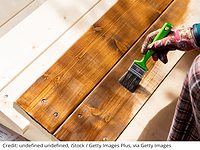Bio-Based Paint from Ralston Colour & Coatings

The new Ralston ExtraTex Matt provides good flow and a smooth, stripe-less result. It is combined with a unique high bio-based percentage of 40-60%, only 1,68kg/litre of CO2 emissions and has a lower environmental impact. With longer open time and the adjustment of the rheology and viscosity, making dilution with water unnecessary, it provides a better flow, prevents lap forming and ensures that there are no marks visible “marks.” It does not matter if the application is done by airless, airmix or airless heated. With a drying time of one half an hour, the results are super smooth, fully matte and the surface is repaintable within four hours.
Ralston extracts value from residual flows by using raw materials from second-generation biomass. It uses an innovative binding technology based on vegetable oils that makes it possible to replace the more traditional binding agents. A clear oil is extracted from biomass waste from olives, corn and sunflowers. This oil is the basis of the innovative binder. In contrast to fossil raw materials, vegetable oil is a renewable raw material and therefore does not come at the expense of agricultural land and food production for people and animals.
Bio-based percentages can be calculated in many different ways, making it difficult to compare them. In order to determine the bio-based content of Ralston paints, the company measures the proportion of bio-based raw materials as a percentage of the total product. This is accomplished by using the certified C14 method in accordance with the NEN-EN 16640:2017 standard. By expressing the bio-based content as a percentage of the entire product, users can clearly see the actual proportion of bio-based (renewable raw materials) in a product. To compare the bio-based percentage of products, consumers should make sure that the same measuring method is applied to all products.
For more information, visit www.ralstoncolour.com.
Looking for a reprint of this article?
From high-res PDFs to custom plaques, order your copy today!







